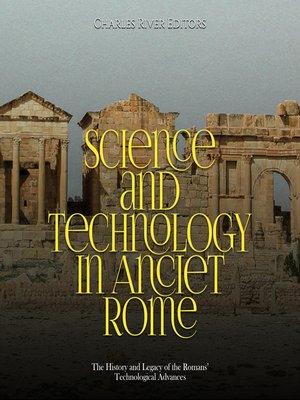Science and Technology in Ancient Rome
audiobook (Unabridged) ∣ The History and Legacy of the Romans' Technological Advances
By Charles River Editors

Sign up to save your library
With an OverDrive account, you can save your favorite libraries for at-a-glance information about availability. Find out more about OverDrive accounts.
Find this title in Libby, the library reading app by OverDrive.



Search for a digital library with this title
Title found at these libraries:
| Library Name | Distance |
|---|---|
| Loading... |
The modern world has the ancient Romans to thank for the origins of many modern technologies, conveniences, and ideas, from running water, baths, and republican style government to roads. Similarly, by the 3rd century BCE, the Romans were prodigious monument builders, so much so that the memory of the great Roman Republic and the Roman Empire continues to exist within a cityscape of stone. Rome's public spaces were filled with statues, arches, temples, and many other varieties of monumental images, and each of these structures had its own civic or religious function. At the same time, most were embedded with stories, messages, and symbolism so that they also tended to function as propaganda. These monuments allowed the leading citizens of Rome, especially its emperors, to sculpt their own self-image and embed themselves and their most memorable deeds into the very structure of the Roman city.
While some of the most famous examples, like the Colosseum and Pantheon, remain striking testaments to Roman engineering and technology, many of the scientific advances the Romans ushered into the world were smaller in scope but not necessarily any less important. Indeed, the Roman Empire was not just one of the most technologically advanced civilizations within the ancient world but also proportionately one of the most prolific throughout all history. A substantial number of these innovations were lost following the eventual fall of the Western Roman Empire in 476 and the subsequent centuries of decline of the Byzantine Empire starting in the early 7th century, but rediscoveries of their advancements began during the later Middle Ages and the beginning of the Modern Era (c. 1400s). Some of their ideas and designs are only now being improved upon thanks to newer, far more advanced modern technologies.







